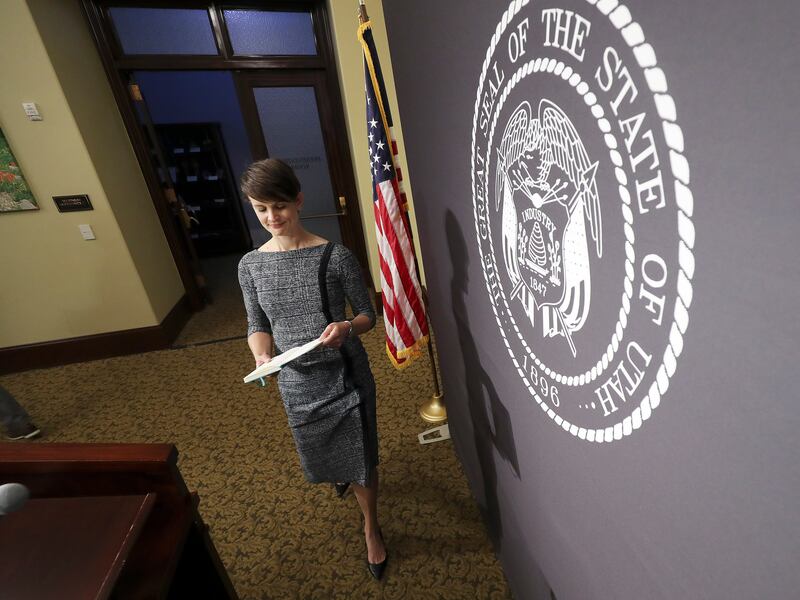The state epidemiologist disagrees with a legislative commission that is recommending Utah move to a “smart green” risk phase for COVID-19, which would put the state one short step from the resumption of normal activity.
Unfortunately, this is sending a mixed signal at a time when Utahns still need to exercise great caution. The virus has not left the state. It still is spreading.
The governor will make the final decision. We urge him to err on the side of caution.
The epidemiologist, Dr. Angela Dunn, said Utah is experiencing a surge of new cases that cannot be “explained easily by a single outbreak or an increase in testing.” She said the state may want to consider moving back to a high level of alert, instead.
But the Public Health and Economic Emergency Commission, which consists of government, business, health and community representatives, points to a low community spread transmission rate, and the fact Utah’s hospitals are not overwhelmed with COVID-19 patients, in making its recommendation. It also continues to urge Utahns to wear masks, socially distance from one another and regularly wash their hands.
It’s that last message that may be getting lost in all this. Much of the state already has moved to a less restrictive “yellow” stage, with Salt Lake City and West Valley City remaining in a more restrictive “orange” level. People over 65 and with underlying health conditions, meanwhile, have consistently been told to stay home and exercise extreme caution.
But it’s uncertain how many Utahns are listening to the nuance. Anecdotally, fewer people seem interested in wearing masks. As recent downtown protests demonstrated, social distancing doesn’t appear to be on the minds of everyone, either. Vacation spots around the state have been filled in recent weeks.
Moving to a “green” phase, even a “smart green” phase with all the cautions attached, may send the wrong message.
Utah Senate President Stuart Adams, a member of the commission, may offer the best living example of why Utahns need to continue wearing masks, socially distancing and practicing proper hygiene. He announced Thursday that he has tested positive for COVID-19 antibodies, meaning that he had the virus at some point without any noticeable symptoms. It also means he was a carrier.
Adams is a strong proponent of wearing a mask, which is effective in keeping carriers from spreading the virus to others. He strongly urges other people to wear masks and take the other precautions, as well.
But his test results demonstrate that many others in the population may also be carriers unawares.
Certainly, there is another side to this story that cannot be ignored. As Adams told us Thursday, Utah has seen an increase in non-COVID-19 deaths, as well, which may mean that people are waiting too long to see a doctor, perhaps worried about contracting the coronavirus. In addition, the strain of unemployment and loss of income can lead to health problems both physically and mentally.
The state’s economy simply cannot remain shut down indefinitely.
But it must develop a strategy that adequately impresses on people the seriousness of the current situation, and that convinces them to take precautions. It also must find a reasonable way to reimpose restraints on certain parts of the state when flareups are detected.
That may mean abandoning the color coding scheme entirely for another type of message.
Utah has done an impressive job of limiting the spread of COVID-19, at least so far. But in the face of what experts are calling a surge, it makes no sense to send the implied message that Utah, or any other part of the United States, is close to no longer having to worry about the virus.

